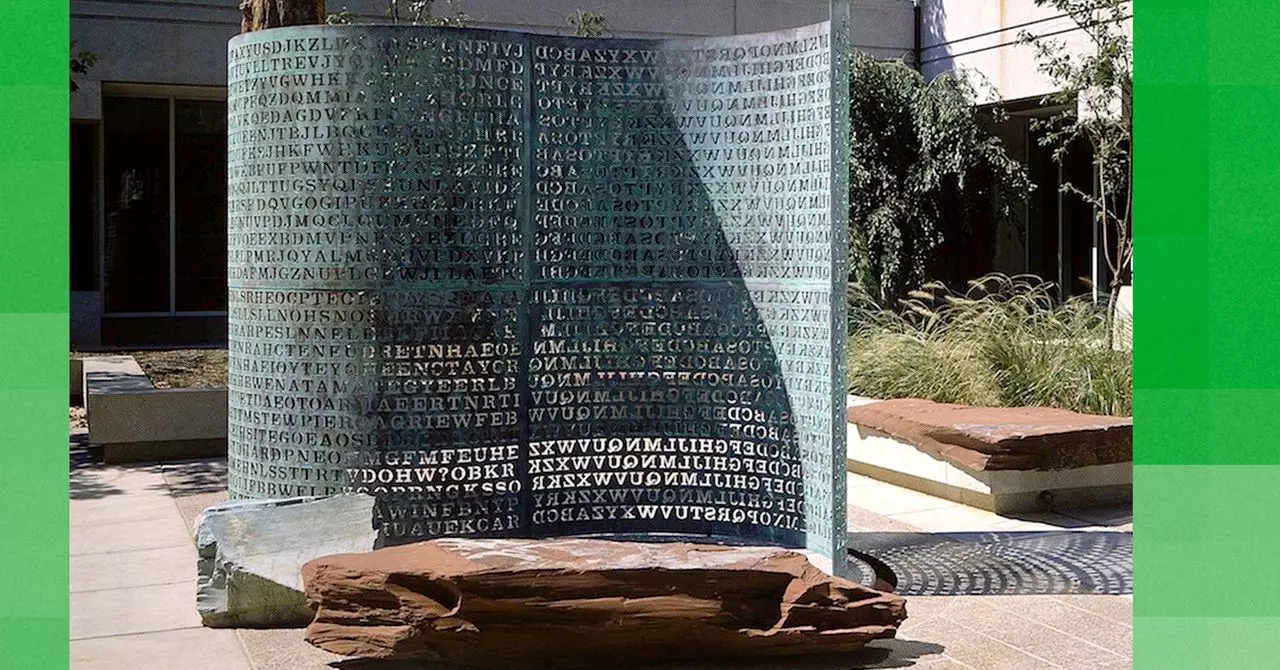For over three decades, Kryptos, a striking sculpture nestled within the confines of the CIA in Langley, Virginia, has been a source of endless intrigue and frustration for amateur and professional cryptographers alike. Created by artist Jim Sanborn, this enigmatic piece is adorned with a series of cryptic panels that challenge even the most skilled codebreakers. Despite the involvement of esteemed organizations like the CIA and NSA, a critical portion of the sculpture—known as K4—remains shrouded in mystery. The allure of Kryptos lies not just in its aesthetic appeal but also in its embodiment of the intellectual challenge that has captivated thousands. However, the allure is increasingly marred by new developments in how people approach the puzzle, particularly the growing influence of artificial intelligence.
The Rise of AI-Assisted Codebreaking
As advancements in AI technology surge, a peculiar phenomenon has emerged: numerous individuals are now harnessing AI models to tackle the Kryptos riddle. Many enthusiasts increasingly find solace in believing that machine-generated solutions can surpass the countless hours of painstaking effort put forth by seasoned mathematicians and cryptologists. The allure of AI, with its promise of near-automated success, seems to undermine the deep, intricate layers of thought necessary to appreciate Kryptos fully. Sanborn’s frustration with this situation reflects a broader concern regarding the diminishing respect for intellectual endeavor as automated solutions pave the way for superficial engagement with complex problems.
Consider the scenario where a self-proclaimed codebreaker, fueled by a cup of coffee and AI-generated insights, triumphantly declares their breakthrough to Sanborn—a declaration that holds little merit. These interactions reveal not only a disconnect between the submission and the depth of the challenge but also a remarkable level of confidence in the AI that produced such answers. While AI undoubtedly serves as a powerful tool, the critical misjudgment lies in the assumption that its outputs can replace human skills and insights. Sanborn’s observations highlight a troubling trend that raises questions about authenticity and understanding within the codebreaking community.
The Art of Cryptography versus the Antics of AI Submissions
When engaged with individuals attempting to decode the panels, Sanborn often encounters a growing number of submissions that lack the rigor and expertise that typically characterize serious cryptographic efforts. The submissions powered by AI tend to exhibit a disconcerting uniformity in language and exaggerated confidence, betraying a lack of fundamental understanding about the intricacies embedded in the Kryptos project. Sanborn equates this situation to someone claiming to have summited a mountain after merely taking a helicopter ride to the top. Such analogies underscore the superficial approach these AI users apply to a problem that requires nuanced thinking and dedication.
The relationship between Sanborn and the community of codebreakers had previously been defined by a shared respect for the cerebral challenge that Kryptos presents. However, as AI-fueled submissions flood his inbox, this dynamic begins to shift. Sanborn’s annoyance is not simply about incorrect solutions; it’s about the cavalier attitude displayed by those who may not grasp the artistry and thought embedded within Kryptos. It’s as if the history and effort invested by countless enthusiasts are relegated to mere footnotes in the rush for instant gratification.
A Call for Authenticity in the Pursuit of Understanding
The implications of an AI-driven society extend beyond cryptography, forcing us to consider the very essence of understanding and expertise. Sanborn’s frustration boils down to a fundamental question: How do we navigate a landscape where technological tools promise quick solutions but risk undermining genuine intellectual curiosity? It is essential to advocate for a return to substantive engagement with complex problems. As the digital age fosters shortcuts and instant results, the pursuit of knowledge and the appreciation of artistry should remain paramount.
The irony of Kryptos lies not in merely finding answers but in the journey of exploration it encourages. For Sanborn, K4 represents more than a mere code; it is a metaphor for the challenges inherent in decoding the nature of secrecy itself. As the allure of AI beckons newer generations into the realm of cryptography, it is vital to cultivate an appreciation for the artistry and craftsmanship that accompanies this intellectual pursuit. Rather than succumb to the seductive lure of easy solutions, let us re-dedicate ourselves to the rich, rewarding, and often arduous journey of seeking understanding in a complicated world.


Leave a Reply